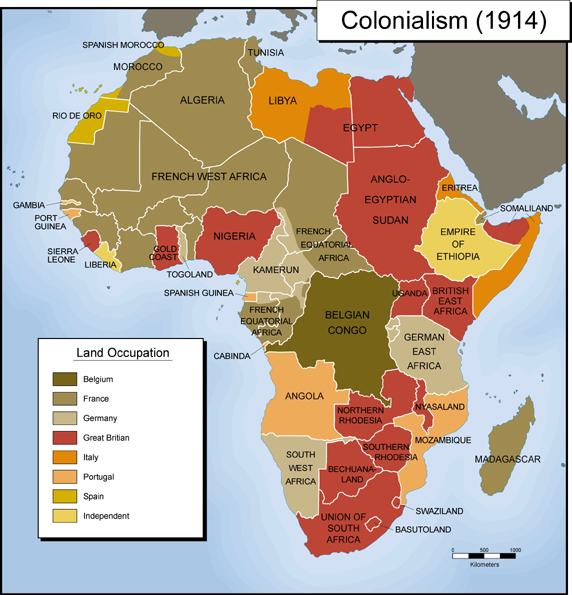French West Africa ( Afrique occidentale française) was by 1913 a federation of eight French colonial possessions in Africa that extended, on an East-West axis, from Senegal on the Atlantic coast to the border of Chad and, on a North-South axis, from the northern border of Senegal and Algeria to the Ivory Coast. The explosive growth of the French Empire after the mid-1880s necessitated the consolidation of political authority in an effort to coordinate policy and eliminate intercolonial rivalry, ultimately resulting in the creation of three colonial federations: French Equatorial Africa, French West Africa, and French Indochina. French West Africa, created in 1895, was the largest and most geographically diverse of the three, combining the colonies of Senegal, Ivory Coast, French Sudan (present-day Mali, Niger, and Burkina Faso) and French Guinea into a single administrative unit. Later additions included Dahomey in 1899 (present-day Benin) and Mauritania in 1904. As in the other federations, political authority in French West Africa was highly centralized. Each colony retained its own governor and local colonial administration, but they were all subject to oversight by a governor-general headquartered in the Senegalese port town of St Louis, moved to Dakar in 1904.
The position of governor-general was immensely powerful. The decision to forbid individual governors from having direct contact with Paris meant that the governor-general, who answered directly to the colonial minister and French parliament, served as a clearinghouse for all colonial policies, decisions, and reports. Moreover, in addition to setting federation-wide health, education, and agricultural policies, the governor-general also controlled the purse strings of individual colonial governments, as all revenues from customs duties gathered throughout the federation were sent to Dakar and then reallocated in the form of “subsidies.” As such, the governor-general was not only in a position to pressure the colonial governors under his command to follow a common set of policies but was also able to coordinate economic development by directing investment in infrastructure. The result was a growing emphasis throughout the early twentieth century on the cultivation of cash crops such as peanuts, cotton, coffee, and cocoa, as well as intensive railroad construction to open the interior to trade.
During World War II, French West Africa served as a crucial base of operations for Charles de Gaulle and the Free French. As a reward for this service, the French colonies in West Africa were granted increased local autonomy and, once the war ended, were transformed into overseas territories, complete with citizenship and full political rights for their inhabitants. By 1956, however, the rising tide of African nationalism led to demands for independence and the final dissolution of French West Africa as a political entity.
FURTHER READING: Aldrich, Robert. Greater France: A History of French Overseas Expansion. New York: St. Martin’s Press, 1996; Chafer, Tony. The End of Empire in French West Africa: France’s Successful Decolonization? Oxford: Berg, 2002; Johnson, G. Wesley. Double Impact: France and Africa in the Age of Imperialism. Westport, CT: Greenwood Press, 1985; Manning, Patrick. Francophone Sub-Saharan Africa 1880–1995. 2nd ed. Cambridge: Cambridge University Press, 1998; von Albertini, Rudolf. European Colonial Rule, 1880–1940: The Impact of the West on India, Southeast Asia, and Africa. Westport, CT: Greenwood Press, 1982; Wesseling, H. L. The European Colonial Empires 1815–1919. New York: Longman, 2004.
